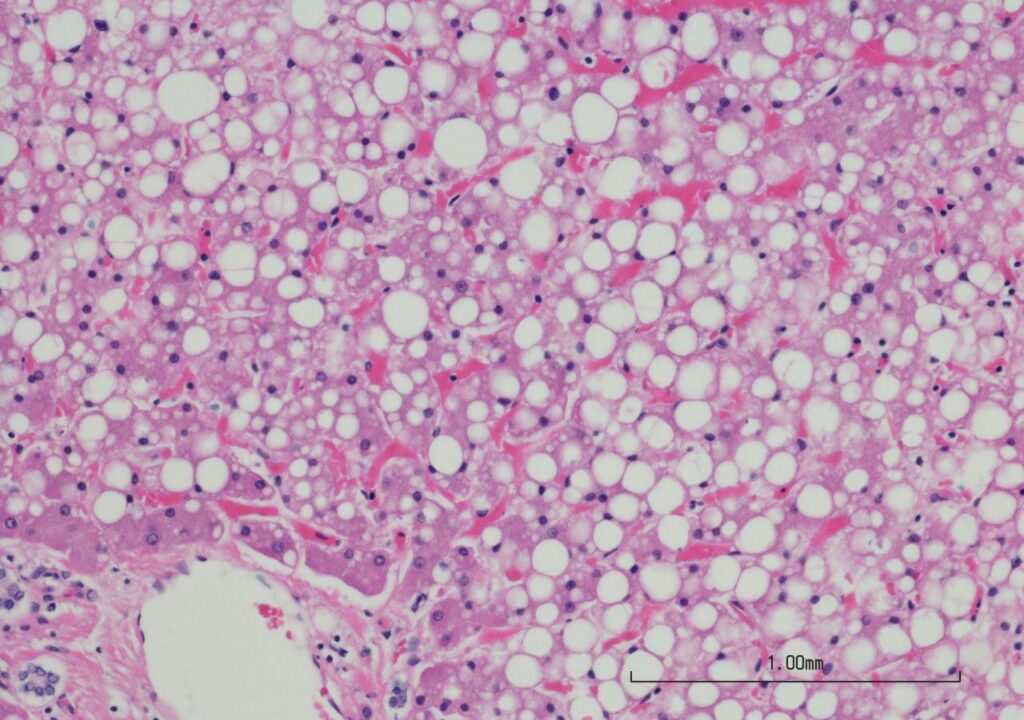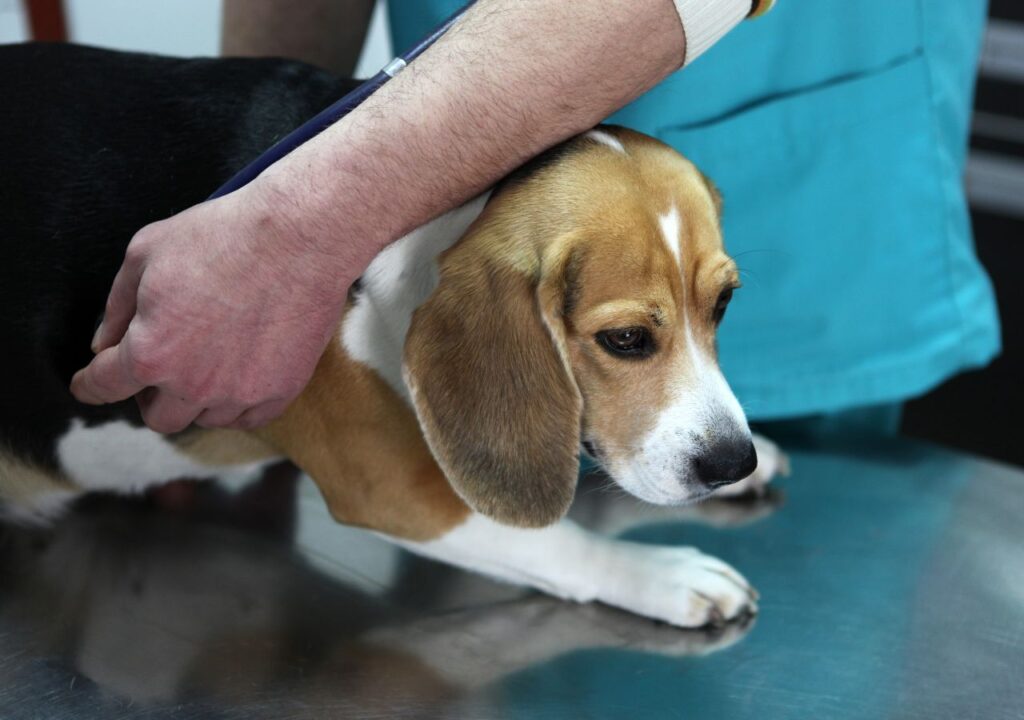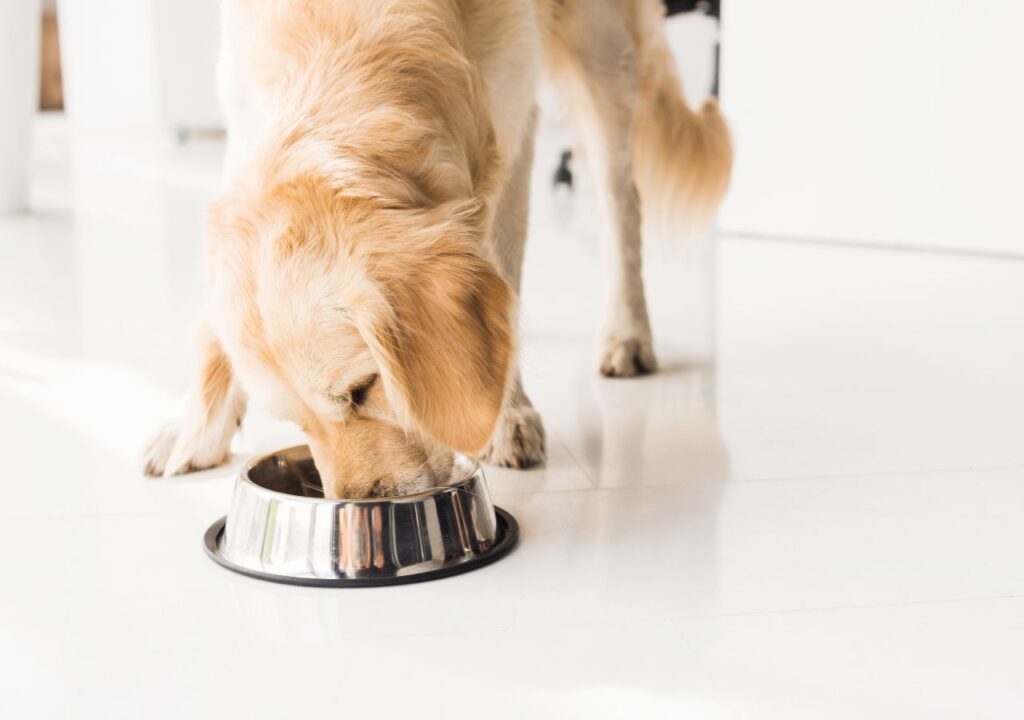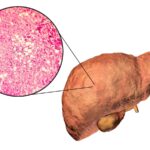The symptoms of liver disease can be difficult to recognize. Often, dogs with liver disease are not taken to the vet until their condition becomes very serious. What symptoms should you look for? What should you do if you think your dog has liver disease?
What is the liver for?
The liver is an organ that performs many functions in the body – it neutralizes toxins; metabolizes proteins, fats, and carbohydrates; stores energy in the form of glycogen; produces digestive enzymes; participates in the breakdown of used blood cells; and produces cholesterol and proteins necessary for blood clotting. It is essential for many different processes in a dog’s body. Therefore, when the liver is not functioning properly, the entire body suffers and the symptoms can vary greatly depending on the degree and type of damage to this organ.

Liver Disease in Dogs – Symptoms
The liver is an organ with a high capacity for regeneration, and often minor damage does not cause any visible symptoms – abnormalities can only be detected by chance through biochemical blood tests. However, when symptoms do occur, they may not be very specific, especially at first. Your dog may become lethargic, apathetic, lose appetite, lose weight, and experience vomiting and diarrhea. More specific symptoms of liver disease include a change in stool color, jaundice, blood clotting problems, ascites (enlargement of the abdomen due to fluid accumulation), and nervous system symptoms, including seizures.

Hepatic encephalopathy
The above nervous system symptoms caused by liver failure are collectively called hepatic encephalopathy. What does it mean? Liver disease reduces the liver’s ability to neutralize toxins and efficiently process proteins and nitrogen compounds. This leads to increased levels of ammonia and other toxins in the blood, which adversely affect the nervous system and cause neurological disorders.

Congenital Liver Diseases in Dogs
Liver diseases in dogs can have various causes. Some can be congenital, such as portal-systemic shunts, which result from abnormal liver vascular structure and cause hepatic encephalopathy in very young dogs. In such cases, surgical treatment is usually effective, restoring normal vascular connections. Some breeds are also prone to storage diseases, which involve the accumulation of various substances in the tissues. As a result, the liver may be burdened with excess amyloids or be unable to remove copper compounds from the bile, which then accumulate in other organs.
Canine Hepatitis
A very dangerous infectious disease can contribute to liver dysfunction in dogs. This is canine viral hepatitis, also known as Rubarth’s disease. It is caused by canine adenovirus type 1 (CAV-1). Dogs and foxes are infected with this disease, and the source of infection is excreta and secretions, including urine and feces, that dogs may come in contact with on a daily basis. Currently, this disease is very rare in dogs due to widespread vaccination.
Other causes of liver damage in dogs
Liver damage can occur as a result of ingesting substances that are toxic to dogs, such as grapes or chocolate, but also various types of poisons, pesticides, human medications, or spoiled food. A long-term unhealthy diet, including an unbalanced diet or excess copper, can also contribute. Cancer is also common – the liver in dogs is most commonly affected by metastases from other organs, but primary liver tumors also occur. Can dogs get cirrhosis of the liver? Of course they can. This occurs when a damaging factor is present for a long time, causing scar tissue to form and permanently impair the function of the organ.
Liver Disease in Dogs – Diagnosis and Treatment
Liver disease in dogs is diagnosed based on symptoms combined with tests such as blood tests and abdominal ultrasound. The amount of testing required depends on the initial assessment by the veterinarian. Treatment may vary depending on the diagnosis and symptoms. In cases of early detection, treatment includes neutralization of toxins and rehydration. Some conditions, such as congenital abnormalities or tumors, may be treated surgically. Chronic liver disease manifested by coagulation disorders may require blood transfusions. Whatever the case, it is important to remember to support the function of the organ through supplementation and diet.
Liver Disease in Dogs – Nutrition
The liver is an organ with a high regenerative capacity. It is able to rebuild its cells to a certain extent, but it needs the right conditions to do so, which can be provided by a balanced diet. Everything that is digested in the intestines before it nourishes the entire body must pass through the liver, which is responsible for detoxification and metabolic processes. Therefore, to support its function, the food fed to dogs must be easily digestible and free of toxins. It should contain an adequate amount of good quality animal protein. It is very important to note that in most liver problems, protein should not be reduced, but the focus should be on moderate or limited amounts of fat and carbohydrates. Protein should be reduced in cases of hepatic encephalopathy, such as portal-systemic shunts. In addition, the diet must be perfectly balanced in terms of vitamins and minerals (especially copper and zinc), and it is also worth ensuring the presence of ingredients that support liver regeneration, such as milk thistle, ornithine and phospholipids.
In my experience, a cooked diet works best for dogs with liver disease. You can read more about this in the article: ,,Homemade dog food – what to cook for your dog?“.




